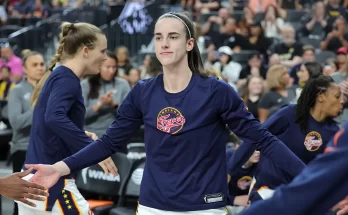Can Patrick Mahomes Sustain the Chiefs’ Dynasty as AFC Contenders Rise?
The Kansas City Chiefs have enjoyed a stretch of dominance rarely seen in the NFL, guided by the brilliance of Patrick Mahomes, the strategic genius of Andy Reid, and a front office that consistently reloads the roster with talent. Three Super Bowl titles in five years and six consecutive AFC Championship appearances at home have cemented their status as the team of the era. Yet with every dynasty comes the looming question: how long can it last? For Mahomes and the Chiefs, the challenge of sustaining their dynasty has never been more complex, especially with a growing field of contenders emerging across the AFC.
At the center of this ongoing dynasty is Mahomes, the generational quarterback whose mix of arm talent, mobility, leadership, and improvisation has redefined the position. His accolades speak for themselves—multiple MVPs, Super Bowl MVPs, and record-setting performances. But as he continues into the second half of his NFL career, the burden of legacy grows heavier. Greatness is measured not just in peak moments but in sustained excellence. The quarterback has embraced that, yet even he knows that the NFL evolves rapidly. Opponents adapt. Challenges shift. What worked three years ago might not work tomorrow.
One of the most immediate challenges is personnel turnover. The Chiefs have navigated cap constraints, free agency losses, and the natural cycle of roster attrition better than most. But the departures of key players like Tyreek Hill in 2022 and the potential free agency of cornerstone defenders like Chris Jones force Mahomes to constantly recalibrate his game. Though Travis Kelce remains his most trusted weapon, he’s also aging, and eventually, Kansas City will have to build new chemistry with younger skill players. Rashee Rice showed flashes of promise, but his off-field issues and potential disciplinary actions could cast a cloud over his development. Rookie Xavier Worthy has world-class speed, but adjusting to the NFL pace isn’t guaranteed to be smooth.
This is where Mahomes’s adaptability becomes crucial. What sets him apart is not just what he does when things go right, but how he finds solutions when things fall apart. In the 2023 season, he managed to lead the Chiefs to another Super Bowl despite an uncharacteristically inefficient offense. He adjusted his style to play more conservatively, relied heavily on his defense, and leaned into game management more than ever before. That pivot demonstrated the evolution of a quarterback who understands that championships often come from resilience, not fireworks.
But as Kansas City enters the 2025 season, the stakes are higher. The AFC has never been more stacked with elite quarterback talent. Joe Burrow will return healthy and motivated in Cincinnati. Josh Allen remains a juggernaut in Buffalo, capable of single-handedly dismantling defenses. Lamar Jackson continues to challenge defensive coordinators with his dual-threat capabilities in Baltimore. C.J. Stroud looks poised to elevate the Texans into legitimate contenders, and Trevor Lawrence, Justin Herbert, and Tua Tagovailoa are all developing into formidable leaders for their respective franchises. Every week in the AFC feels like a heavyweight battle. Mahomes no longer has the element of surprise. He’s the hunted, not the hunter.
What’s more, many of those teams are constructing their rosters around the formula Kansas City helped perfect—dynamic quarterback play paired with fast, versatile defenses and creative play-calling. The Chiefs have been the blueprint. Now others are replicating it. Mahomes, for all his brilliance, will be tested not just on Sundays but throughout the offseason as he must continue developing chemistry with ever-changing receivers, stay mentally sharp, and maintain the physical endurance to endure deep playoff runs. His ability to inspire belief in teammates is one of his most underrated traits, but even that will be tested as expectations only grow.
Another key dynamic to consider is Andy Reid. The 66-year-old head coach has hinted at retirement over the years, though nothing concrete has surfaced. Still, his eventual departure could be a significant turning point in Mahomes’s career. Reid’s offensive system and game management have been essential to Mahomes’s early success. If Reid steps away, the next head coach—possibly someone like offensive coordinator Matt Nagy—would inherit a talented roster but also tremendous expectations. The synergy between Mahomes and Reid is rare; breaking that connection could cause ripple effects, even if the transition is internal.
The front office, led by Brett Veach, also carries a heavy burden. Finding inexpensive but high-performing talent is key to extending the dynasty. With Mahomes’s massive contract on the books—albeit restructured multiple times to help the team—the margin for error in the draft and free agency becomes slim. Misses can’t be frequent. The recent success of drafting impact defenders like Trent McDuffie and George Karlaftis has been crucial, but similar hits need to continue. And as Mahomes matures, so too must the roster-building philosophy—shifting slightly toward protecting him, both with a reliable offensive line and with weapons that reduce his need to make heroic plays every down.
Injuries are also part of the conversation. Mahomes has largely avoided major setbacks, aside from a few high-ankle sprains and nagging issues that he’s played through. But as time passes, the wear and tear add up. The Chiefs will need to be strategic in managing his workload, even if that means sacrificing a regular-season win or two to ensure playoff freshness. Load management isn’t common in football the way it is in basketball, but for franchise players like Mahomes, long-term health is paramount. Preserving his mobility—one of his greatest assets—requires discipline, both from the coaching staff and from Mahomes himself.
Despite these rising obstacles, Mahomes’s competitive fire burns bright. His leadership was on full display during the Chiefs’ recent Super Bowl run, where he refused to let the team buckle under adversity. He embraces the target on his back. He welcomes pressure. And that mindset might be the strongest argument for why the Chiefs can continue to thrive. Dynasties rarely survive because of one player, but if ever there was an exception, it might be Mahomes. His teammates revere him. Opponents respect him. Coaches trust him. The city of Kansas City has built its identity around him.
What’s also notable is how Mahomes has matured off the field. His growing business interests, family life, and philanthropic work haven’t distracted from his preparation. In fact, they may have grounded him. Balancing superstardom with humility is a delicate act, but Mahomes makes it look effortless. That level of maturity has an effect on a locker room. Younger players entering the Chiefs’ orbit are immediately held to a high standard—not just of talent, but of professionalism. That culture, as much as anything, keeps dynasties afloat.
Still, nothing lasts forever in the NFL. Just ask the Patriots. Sustaining excellence year after year requires more than talent. It demands evolution. The Chiefs will need to remain agile, open to rethinking strategies, rotating pieces, and letting go of nostalgia. Mahomes will have to stay hungry, even as the trophies pile up. The challenge isn’t just about repeating success; it’s about redefining what success looks like in each new season.
The Chiefs’ dynasty isn’t over—not by a long shot. But the coming years will determine whether it becomes a legendary reign akin to the 2000s Patriots or a fleeting run of brilliance like the early 1990s Cowboys. Mahomes is capable of being the cornerstone of either narrative. The question is whether the infrastructure around him will evolve with him.
As long as he’s healthy, focused, and surrounded by a competent support system, Kansas City will always be a contender. But the pressure is mounting. The rest of the AFC isn’t standing still. They’re coming—fast, physical, and fearless. Mahomes welcomes that. He was built for it. He’s not just trying to extend a dynasty. He’s trying to reshape the NFL’s understanding of what one looks like. And until someone consistently beats him when it matters most, the Chiefs remain the team to beat. But if the next chapter is to be written in gold, it will take more than Mahomes’s magic. It will take reinvention. Again and again. Year after year. Because greatness isn’t given. It’s defended. Relentlessly.

